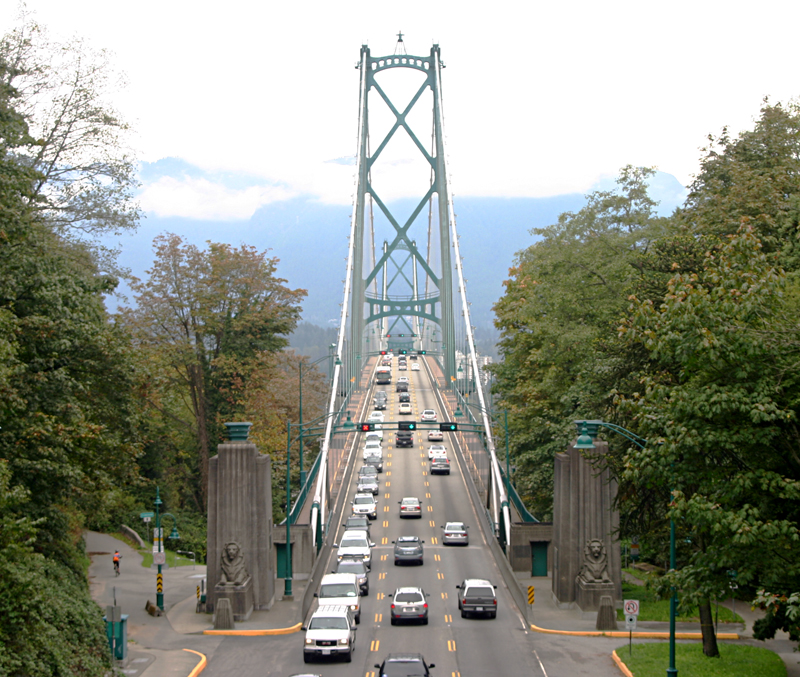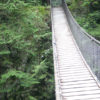O ne of the things I like to do whenever I visit Vancouver is to stand on the sidewalk of the Stanley Park Drive overpass to look to the northeast and watch the traffic heading across the Lions Gate Bridge in both directions, as I could do that for hours — even on a cool, cloudy and dreary day, which is not uncommon in this city located in the Pacific southwest area of Canada.
Overlooking the Lions Gate Bridge in Vancouver
I have seen and crossed many bridges in my travels: the Charles Bridge in Prague; the Golden Gate Bridge in San Francisco; the Sydney Harbour Bridge in Sydney; the Chain Bridge in Budapest; and the Puente De La Mujer in Buenos Aires. I was born and raised in New York, which is home to many famous bridges — including the Brooklyn Bridge…

…but even though there is nothing strikingly special about it, there is something about the Lions Gate Bridge which captures my attention. Could it be the pair of mountain peaks in the background known as The Lions, after which the bridge — designated as a National Historic Site of Canada on Thursday, March 24, 2005 — was named?

Could it be the fact that the bridge is only three lanes wide — there were originally two lanes when the bridge first opened, which is why each of the three lanes is rather narrow — and that despite all three lanes being reversible as indicated by the illuminated signals above the roadway, they still seem to be too inadequate to handle the volume of up to 70,000 vehicles of traffic which cross the bridge daily?

Could it be the decorative — but not ornate — green metal streetlights which illuminate the roadway of the bridge at night?

Could it be the pair of cast concrete lions which “guard” and “protect” the entrance of the bridge on each side of the roadway?

Here is a closer view of one of the pair of concrete lions, which were designed by sculptor Charles Marega and placed on either side of the south approach to the Lions Gate Bridge in January of 1939…

…but there are also lion sculptures on “guard” on Stanley Park Drive.

Although they are considerably smaller than those at the entrance of the bridge, these concrete lion statues are not miniscule.

The Guinness brewing family — yes, that one, known for their dry stout beer — financed the construction of the Lions Gate Bridge, which opened as a toll bridge on Monday, November 14, 1938 to provide access for traffic to its British Properties lands located in West Vancouver.

Ownership was transferred to the province of British Columbia on Thursday, January 20, 1955 for $5,959,060.00; and tolls were removed from the bridge in 1963.

Potentially in danger of being replaced, the Lions Gate Bridge was restored and significantly upgraded in 1998 after a long debate about its heritage value and limited capacity. Funding for the decorative lighting to celebrate Expo 86 was provided by the aforementioned Guinness family.

This article will end with a view to the northwest from Stanley Park of the Lions Gate Bridge crossing the Burrard Inlet between Vancouver on the left and North Vancouver on the right.
Summary
There is no cost to enjoy the view of the Lions Gate Bridge — unless you happen to drive to Stanley Park, where parking your car can cost anywhere from $2.25 per hour to $11.00 per day, depending on the time of year. There is a parking lot within walking distance off of Stanley Park Drive just west of the bridge.
I have always been fascinated by roads, bridges and other forms of infrastructure; so my enjoying watching the bridge is only natural to me.
All photographs ©2013 by Brian Cohen.

